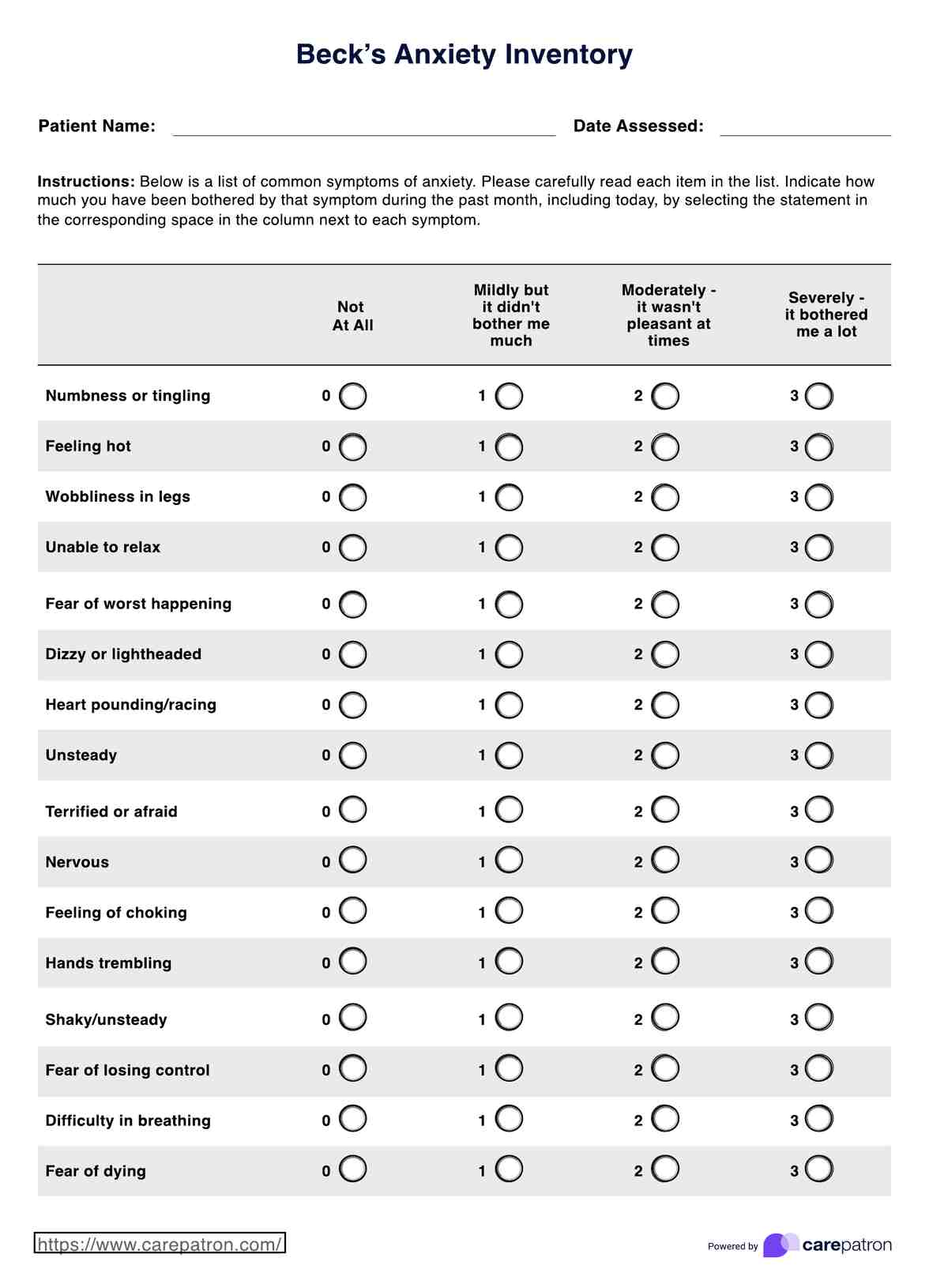It shouldn’t take more than five minutes, but if your patient wants to take their time to think about their answers, let them.

Beck’s Anxiety Inventory
Use Beck’s Anxiety Inventory to gauge the severity of your patient’s anxiety and develop appropriate treatment strategies.
Beck’s Anxiety Inventory Template
Commonly asked questions
No. On the part of the patient, they simply need to pick an answer from a preset selection. On the part of the healthcare professional, they just need to add up the scores and write down any notes in the Additional Comments box.
No. It’s a screening tool included in the anxiety diagnostic process. As we mentioned earlier, the results of this inventory should not be the sole basis for a diagnosis. Using other assessments, covering as much ground as possible is best.
EHR and practice management software
Get started for free
*No credit card required
Free
$0/usd
Unlimited clients
Telehealth
1GB of storage
Client portal text
Automated billing and online payments











